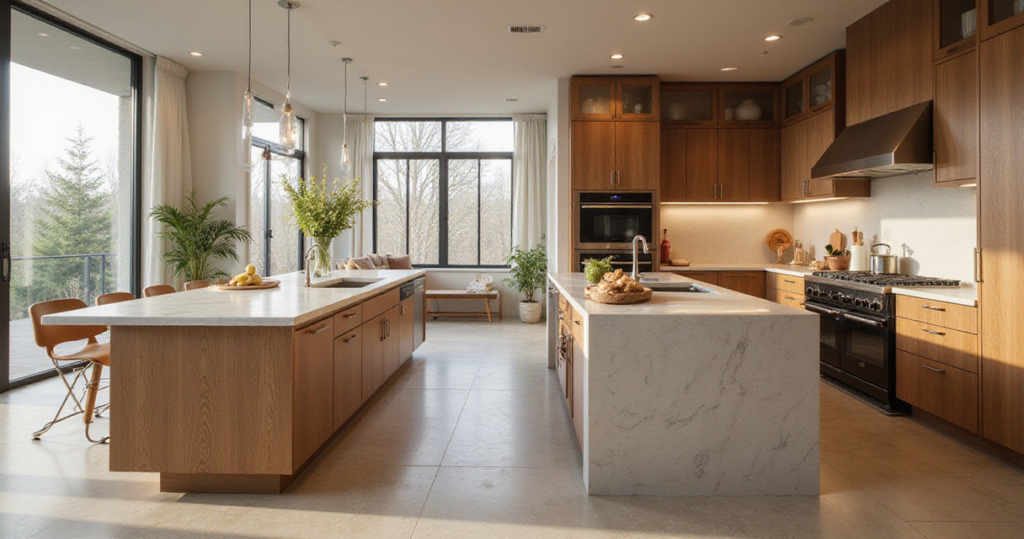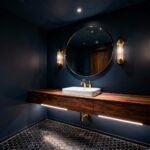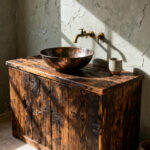Stepping into a kitchen renovation feels like standing at the threshold of possibility – where morning coffee rituals, holiday baking marathons, and late-night conversations with friends will unfold for years to come. This isn’t just about updating appliances or choosing trendy colors; it’s about creating a space that breathes life into your daily routines and celebrates the way your family actually lives.
The overwhelming array of choices – from cabinet styles to smart technology integration – can leave even the most decisive homeowners feeling paralyzed. That’s exactly why I’ve curated these 24 essential kitchen renovation inspiration ideas, each one designed to guide you through the most impactful decisions that will shape your space. These aren’t just surface-level suggestions; they’re the foundational elements that separate a truly transformative renovation from a simple cosmetic update.
Whether you’re dreaming of a cozy farmhouse aesthetic or sleek modern lines, these insights will help you navigate every crucial decision with confidence. Let’s dive into the kitchen renovation inspiration that will turn your vision into the heart of your home.
1. Define Your Kitchen’s True Purpose Beyond Cooking
The magic of successful kitchen renovation inspiration starts with a brutally honest conversation about how your space actually gets used. Walk through a typical week and notice the moments that matter most – are you constantly juggling homework help while prepping dinner, or do you find yourself gravitating toward the kitchen island for morning coffee and evening wine? Understanding these patterns becomes the foundation for every design decision that follows.
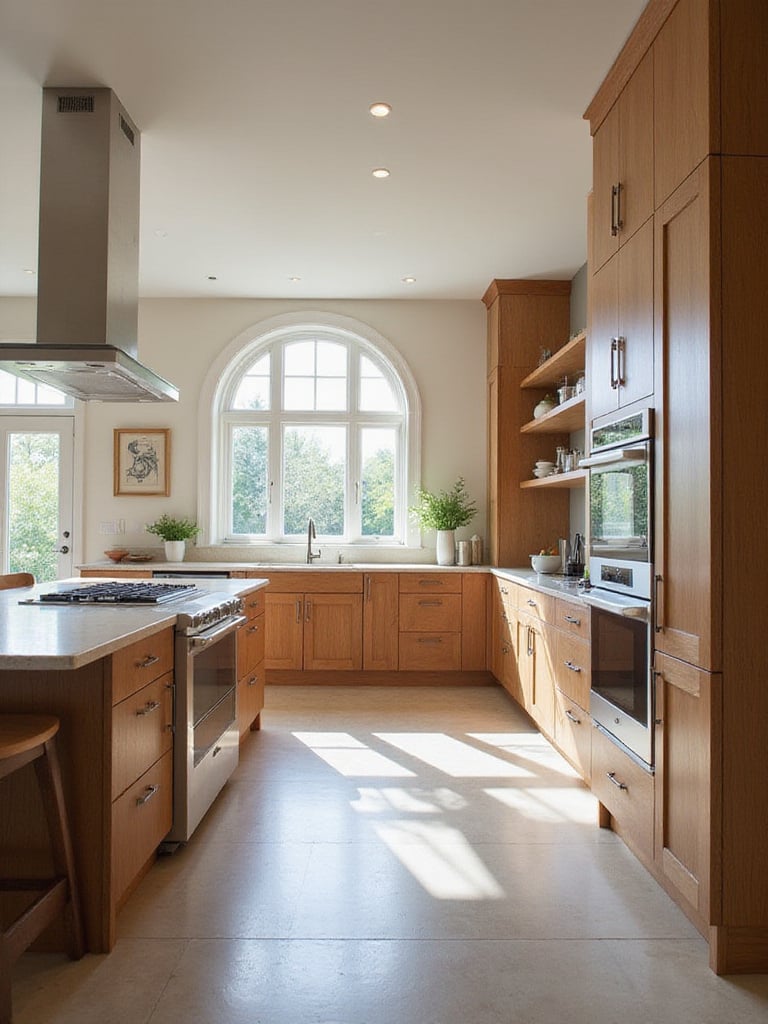
This deep dive into your lifestyle needs can prevent costly mid-renovation changes by up to 30% and dramatically improve your daily satisfaction with the finished space. Consider creating zones for different activities: a dedicated coffee station with built-in storage for mugs and beans, a homework nook with charging stations, or a baking area with lower counters and specialized storage. The families who take time to map out these functional requirements before selecting finishes consistently report higher satisfaction rates and fewer regrets.
- Morning routine mapping: Track who uses the kitchen when and for what activities
- Peak usage analysis: Identify your busiest kitchen times and plan for multiple users
- Future flexibility: Consider how your needs might evolve as children grow or lifestyle changes
What surprises clients most is how this functional planning actually enhances the aesthetic possibilities rather than limiting them – when you know exactly how each area will be used, the design choices become clearer and more intentional.
2. Establish Your Budget Reality Check Early
The craftsmanship reveals itself in details like thorough budget planning, which prevents the all-too-common scenario of falling in love with materials you can’t afford or running out of funds before the project reaches completion. Smart kitchen renovation inspiration always begins with a realistic financial framework that accounts for both expected costs and the inevitable surprises that older homes reveal behind their walls.

Break down your budget into major categories: 35-40% for cabinets and installation, 15-20% for labor, 15-20% for appliances, and 10-15% for countertops, with the remainder covering flooring, lighting, and finishes. The most successful renovations include a 15-20% contingency fund – this isn’t pessimistic planning, it’s practical wisdom that allows you to handle discoveries like outdated electrical systems without derailing your entire project.
Consider implementing a priority ranking system where you identify “must-haves” versus “nice-to-haves.” This approach allows you to allocate funds to the elements that will have the biggest impact on your daily life, such as durable countertops and efficient storage solutions, before investing in luxury upgrades like statement lighting or premium appliances.
The environmental story behind this piece began with understanding that a well-planned budget actually supports more sustainable choices – when you’re not scrambling to cut costs at the last minute, you can invest in quality materials that will last decades rather than settling for cheaper alternatives that need replacement sooner.
3. Discover Your Aesthetic Direction Through Style Exploration
The inspiration for this collection struck when homeowners realize that kitchen renovation inspiration isn’t about copying Pinterest photos, but about identifying the specific elements that resonate with your personal style and home’s architecture. Spend time analyzing what draws you to certain images – is it the warmth of natural wood tones, the clean lines of handleless cabinets, or the character of mixed metals and textures?
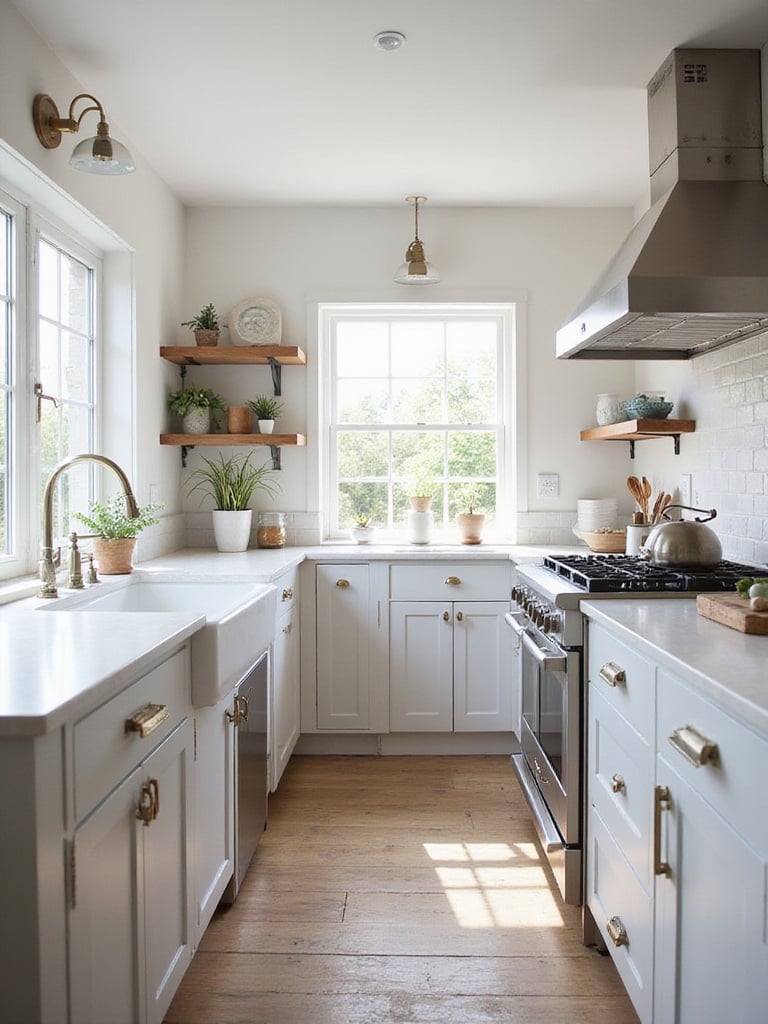
Create a comprehensive mood board that goes beyond kitchen photos to include textures, colors, and even fashion or nature images that capture the feeling you want to create. This visual exploration helps identify patterns in your preferences and ensures your kitchen renovation inspiration aligns with your authentic style rather than fleeting trends. The most successful renovations feel like natural extensions of the homeowner’s personality rather than showroom displays.
- Style analysis: Identify 3-5 specific elements you love in each inspiration image
- Cohesion check: Ensure your kitchen style flows naturally with adjacent living spaces
- Timeless foundation: Choose classic elements as your base, adding trendy touches through easily changeable accessories
What makes this design special is the way it connects to your home’s existing character while introducing fresh energy – a farmhouse kitchen in a colonial home might incorporate Shaker-style cabinets with modern hardware, creating a bridge between traditional architecture and contemporary living.
4. Optimize Your Layout for Seamless Daily Flow
Unlike mass-produced alternatives, this technique allows for truly customized layouts that maximize every square foot while supporting your specific cooking and entertaining patterns. The traditional work triangle concept has evolved into a more sophisticated understanding of kitchen zones – prep, cooking, cleaning, storage, and social areas that work together harmoniously.
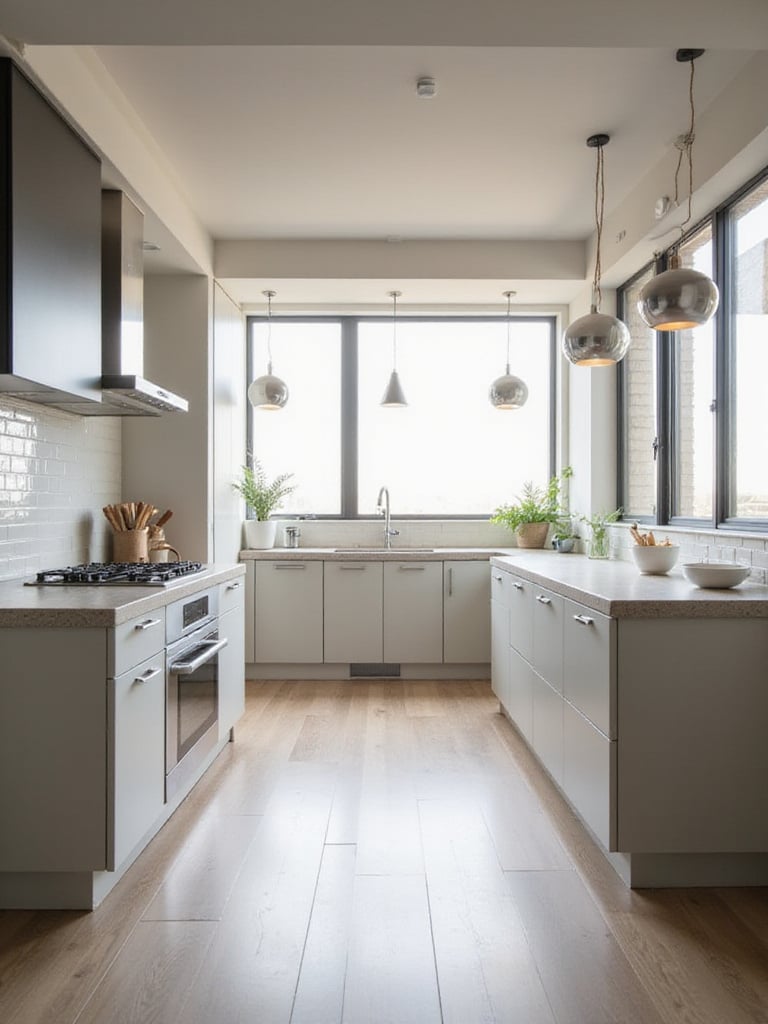
Consider how traffic flows through your space during busy times, ensuring pathways remain clear even when multiple people are using the kitchen simultaneously. Islands and peninsulas should enhance movement rather than create obstacles, with at least 42 inches of clearance on all working sides. The most functional layouts create natural gathering spots that don’t interfere with the cook’s workflow.
Smart layout planning also considers sight lines and supervision needs – can you monitor children’s homework while preparing dinner, or keep an eye on the family room during food prep? These practical considerations often drive the most successful design decisions, creating spaces that truly support modern family life rather than just looking beautiful in photos.
The designer’s secret here is to physically mock up your proposed layout using painter’s tape on the floor, allowing you to walk through daily routines and identify potential bottlenecks before construction begins.
5. Curate Digital Inspiration Boards That Guide Decision-Making
After months of sourcing and curation, successful kitchen renovation inspiration emerges from organized visual research that moves beyond random image collecting to purposeful design direction. Digital platforms like Pinterest and Houzz become powerful tools when used strategically to identify patterns in your preferences and communicate your vision clearly to contractors and designers.
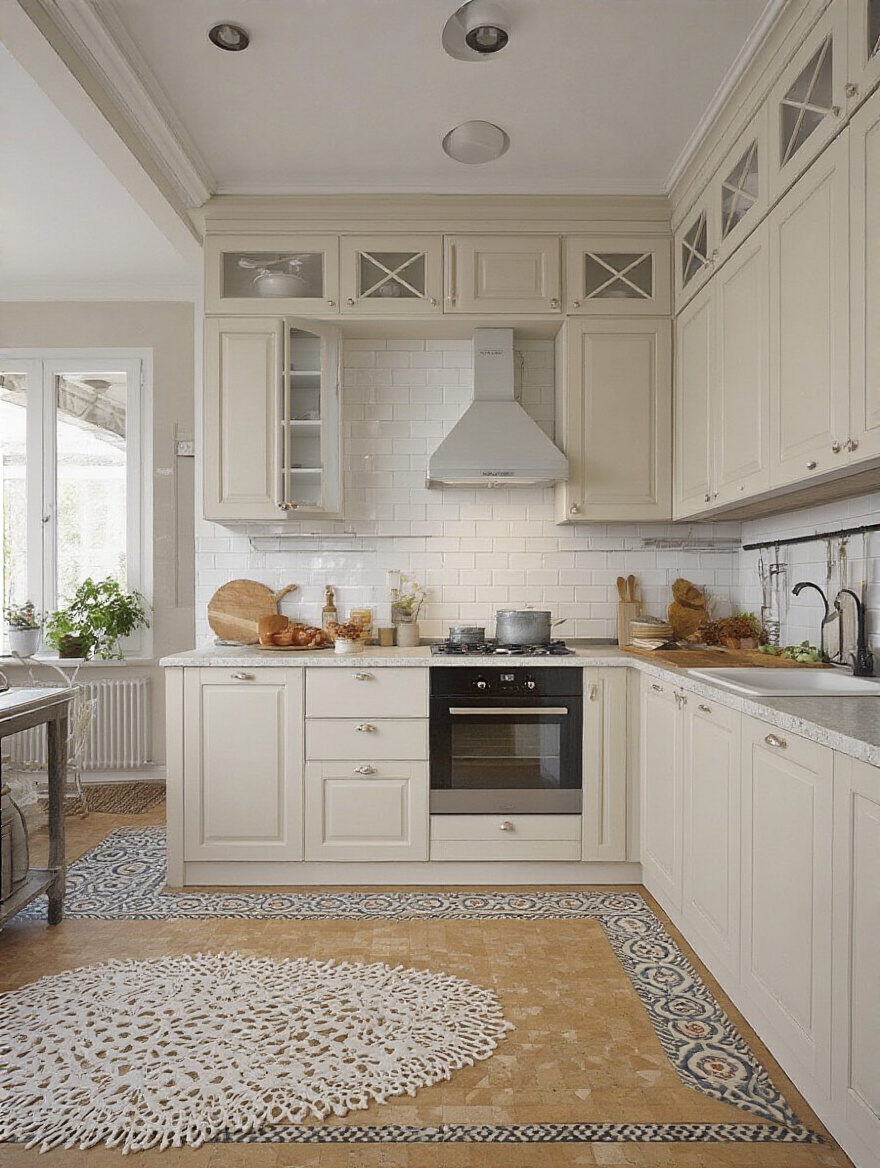
Organize your inspiration into specific categories – cabinetry styles, color palettes, lighting solutions, and hardware details – rather than general “kitchen ideas” boards. This targeted approach helps you recognize the specific elements that consistently appeal to you and makes it easier to source similar products for your actual renovation. The most effective inspiration boards include notes about what specifically appeals to you in each image.
Create both “love” and “dislike” boards to clarify your preferences from both directions. Sometimes understanding what you definitely don’t want is just as valuable as identifying your favorites, helping you avoid costly mistakes and ensuring your finished kitchen truly reflects your personal style.
- Category organization: Separate boards for cabinets, countertops, backsplashes, and lighting
- Detail documentation: Note specific elements you love in each saved image
- Reality check: Include product sources and pricing information when possible
The unexpected pairing that always works is combining aspirational images with practical product research, ensuring your inspiration remains grounded in achievable reality.
6. Research Sustainable Materials for Long-Term Value
The sustainable journey of this material involves understanding how your choices impact both environmental health and your family’s daily well-being. Modern kitchen renovation inspiration increasingly embraces materials that are responsibly sourced, manufactured with minimal environmental impact, and free from harmful chemicals that can affect indoor air quality.
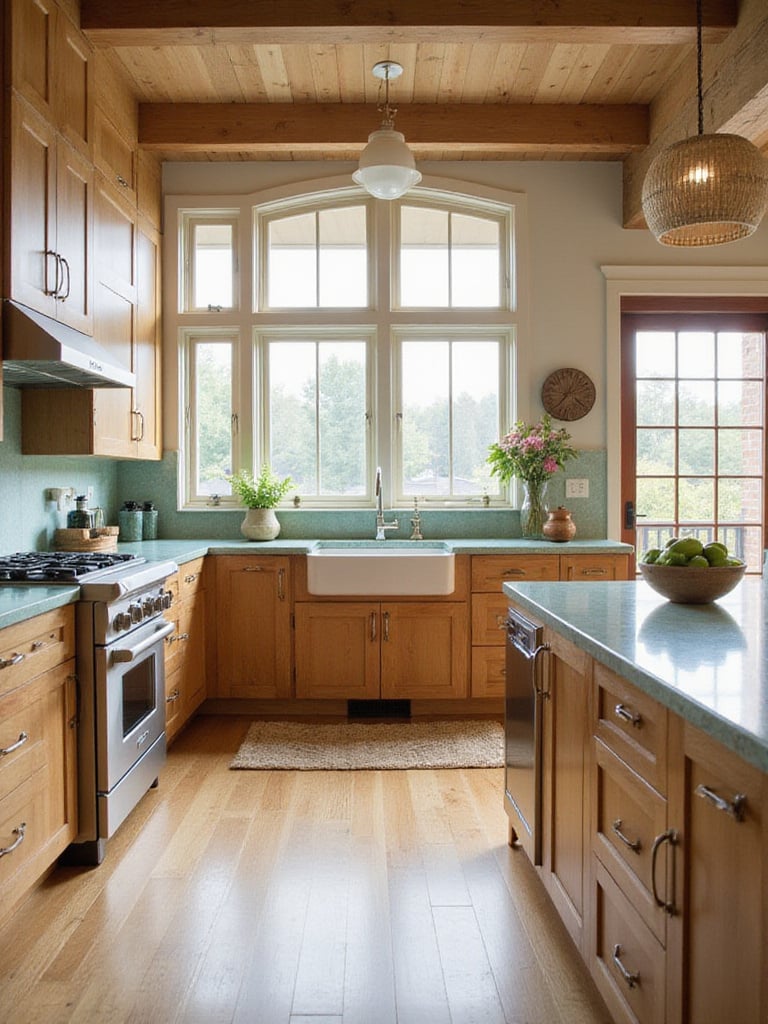
Look for certifications like FSC (Forest Stewardship Council) for wood products, Greenguard Gold for low emissions, and Cradle to Cradle for overall sustainability. These third-party verifications provide confidence that your material choices align with your values while often delivering superior durability and performance. Reclaimed and locally sourced materials can add unique character while reducing transportation impacts.
Sustainable choices often prove more economical over time – bamboo flooring offers superior moisture resistance compared to traditional hardwood, recycled glass countertops provide unique aesthetics with excellent durability, and low-VOC finishes maintain their appearance longer while supporting healthier indoor air quality.
The renewable resources used here demonstrate that sustainable doesn’t mean sacrificing style or performance – today’s eco-friendly materials often outperform conventional alternatives while contributing to healthier homes and a healthier planet.
7. Select Cabinetry That Balances Beauty with Longevity
The construction technique that ensures longevity involves choosing cabinet boxes made from furniture-grade plywood rather than particle board, with solid wood face frames and drawer boxes featuring dovetail joints. Quality hardware from manufacturers like Blum or Salice provides smooth operation and long-term reliability, while multi-step finishing processes resist daily wear and maintain their appearance for decades.
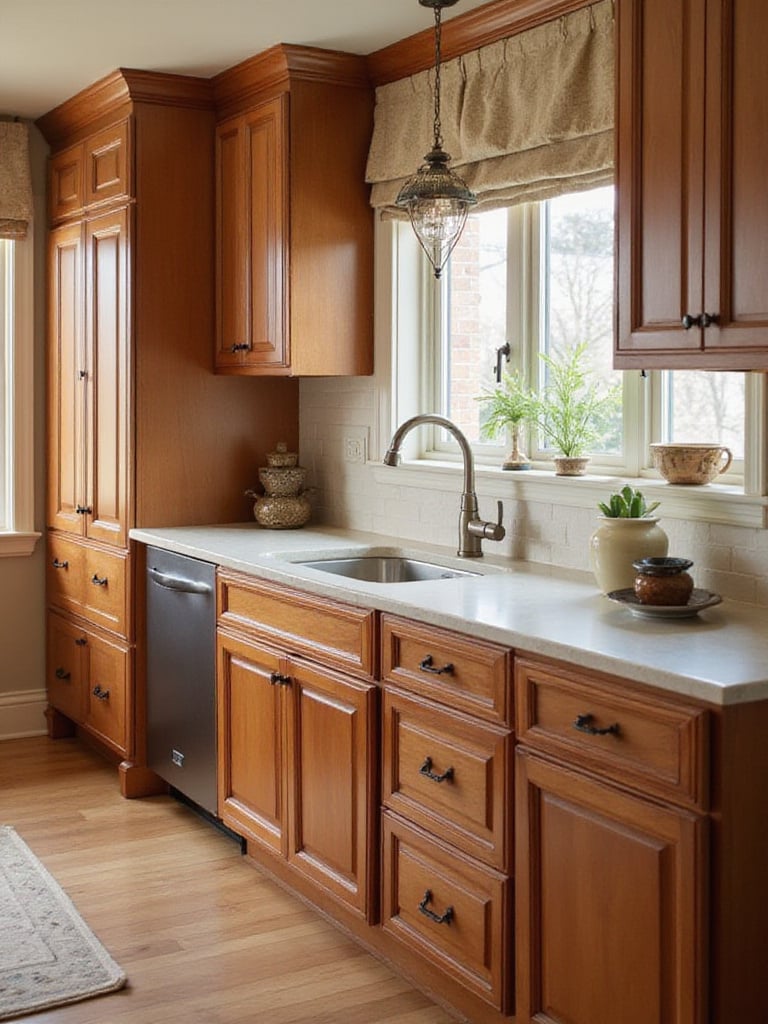
Invest in full-extension drawer glides and soft-close mechanisms – these seemingly small details dramatically improve daily functionality and prevent the wear that comes from slamming doors and drawers. The internal organization systems you choose now will determine how efficiently your kitchen operates for years to come, making custom drawer dividers and pull-out shelves worthy investments.
Consider the door style’s longevity when making selections – while trendy profiles might look appealing now, classic Shaker or simple flat-panel doors tend to remain stylish longer. The finish you choose should complement your lifestyle; busy families might prefer darker stains or painted finishes that hide fingerprints and daily wear better than high-gloss options.
- Construction quality: Plywood boxes, solid wood frames, dovetail drawer joints
- Hardware investment: Full-extension glides, soft-close hinges, quality pulls
- Timeless styling: Classic door profiles that won’t look dated in 10 years
The quality becomes evident after years of use when well-constructed cabinets maintain their alignment, smooth operation, and beautiful appearance while lesser options begin showing their age.
8. Choose Countertops That Perform as Beautifully as They Look
The material sourcing makes all the difference in how your countertops handle daily life while maintaining their stunning appearance. Engineered quartz offers consistent patterns and superior stain resistance, natural stone provides unique character with proper sealing, and newer materials like sintered stone deliver exceptional durability with ultra-thin profiles.
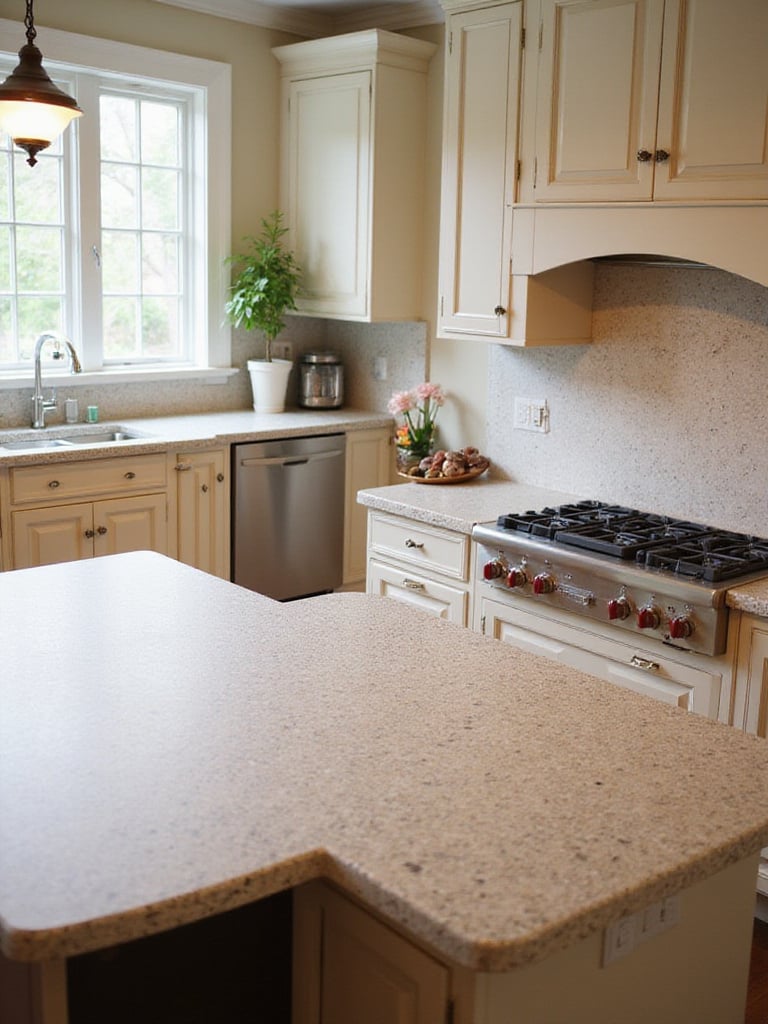
Consider your cooking habits when making selections – avid bakers might prefer the cool surface of marble for pastry work, while busy families often gravitate toward the low-maintenance appeal of quartz. The edge profile you choose can dramatically impact both aesthetics and functionality; simple edges tend to be easier to clean and less prone to chipping than elaborate profiles.
Think beyond the primary countertop material – incorporating a secondary surface like butcher block for an island or a marble pastry section can add both visual interest and functional variety. These mixed-material approaches allow you to enjoy the benefits of different surfaces while creating zones for specific activities.
The investment value comes from the exceptional durability and timeless appeal of quality stone surfaces, which consistently rank among the most desired features for potential home buyers while providing decades of reliable performance.
9. Integrate Smart Technology That Enhances Daily Life
The collaboration began with a conversation about how technology can genuinely improve kitchen functionality rather than just adding gadgets for their own sake. Smart appliances earn their place through features like remote monitoring, energy optimization, and integration with your daily routines – refrigerators that help manage grocery lists, ovens that can be preheated on your drive home, and dishwashers that run during off-peak energy hours.
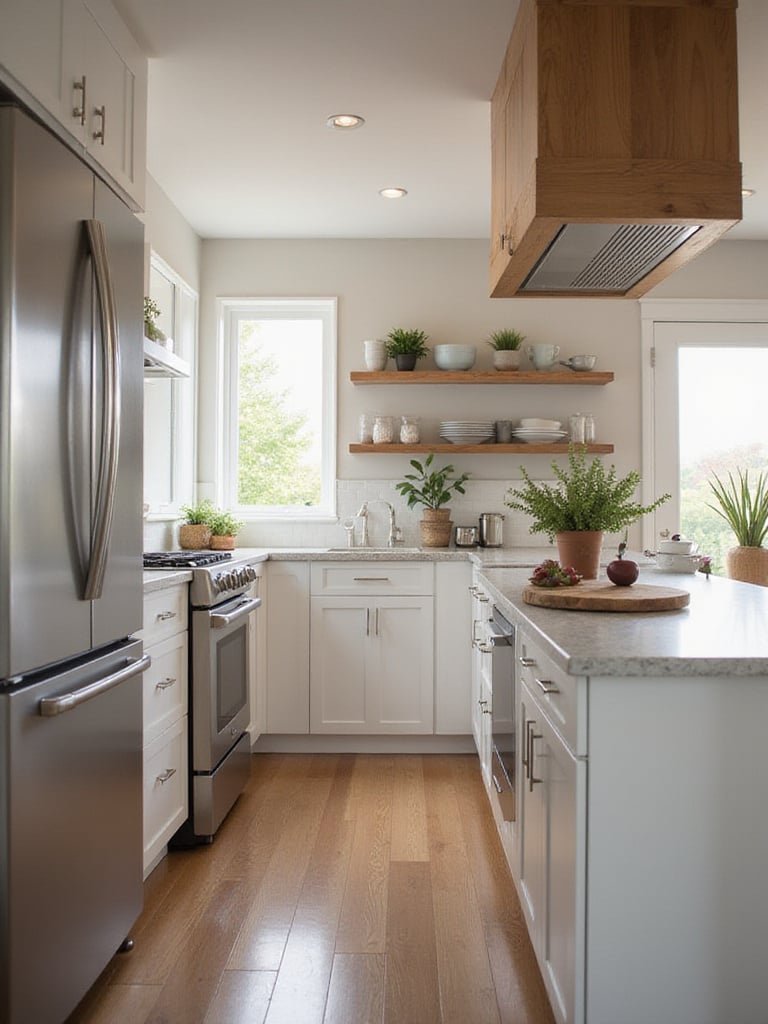
Consider your existing smart home ecosystem when selecting appliances to ensure seamless integration and unified control. Voice activation becomes particularly valuable in the kitchen where hands are often occupied with cooking tasks, allowing you to adjust lighting, set timers, or add items to shopping lists without interrupting your workflow.
The most practical smart kitchen features often involve lighting and climate control – programmable under-cabinet lighting that adjusts throughout the day, smart ventilation that responds to cooking activities, and automated window treatments that help manage natural light and privacy.
- Ecosystem compatibility: Choose devices that work with your existing smart home platform
- Practical benefits: Focus on features that genuinely improve daily routines
- Future-proofing: Select appliances with updateable software and open standards
The maker’s journey from apprentice to master influenced the understanding that the best smart kitchen technology feels invisible – it anticipates your needs and responds intuitively rather than requiring constant attention and adjustment.
10. Select Flooring That Withstands Real Life
The artisan collective that creates these pieces understands that kitchen floors must handle everything from morning coffee spills to holiday cooking marathons while maintaining their beauty and safety. Luxury vinyl tile (LVT) has revolutionized kitchen flooring with realistic wood and stone appearances combined with superior water resistance and comfort underfoot.

Porcelain tile offers exceptional durability and design flexibility, with large-format options creating seamless looks and minimal grout lines for easier maintenance. When selecting tile, pay attention to slip resistance ratings – look for a DCOF rating of 0.42 or higher for wet areas to ensure safety when spills occur.
Consider the subfloor preparation as carefully as the surface material – proper leveling and moisture barriers prevent future problems like buckling or adhesive failure. Quality underlayment can improve comfort, sound absorption, and thermal properties, making hard surfaces more pleasant for extended standing.
The cultural heritage preserved in each piece includes understanding how different flooring materials age and patina over time – some materials hide wear better than others, while some develop character that enhances their appeal with age.
11. Design Lighting Layers That Transform Throughout the Day
As morning light filters through, the texture creates different moods and functionality needs that your lighting design should support. Successful kitchen renovation inspiration always includes ambient lighting for general illumination, task lighting for specific work areas, and accent lighting to highlight architectural features and create atmosphere.

Under-cabinet LED strips provide essential task lighting for countertop work while adding a warm glow that makes the space feel welcoming in the evening. Pendant lights over islands serve both functional and decorative purposes, but their height and spacing require careful consideration – typically 30-36 inches above the counter with 24-30 inches between multiple fixtures.
Dimmer controls on every circuit allow you to adjust lighting throughout the day and for different activities. Morning coffee preparation might require bright task lighting, while evening entertaining calls for softer, more atmospheric illumination. Smart lighting systems can create preset scenes that automatically adjust multiple fixtures to support different activities.
- Layer planning: Combine ambient, task, and accent lighting for complete coverage
- Control systems: Install dimmers and smart switches for flexible adjustment
- Color temperature: Choose consistent warmth (2700K-3000K) for cohesive ambiance
The finishing touch that elevates the entire look comes from treating lighting as jewelry for your kitchen – each fixture should be both functional and beautiful, contributing to the overall design story.
12. Create Backsplash Drama That Protects and Inspires
The third-generation workshop where this comes to life understands that backsplashes serve the crucial dual purpose of protecting walls from moisture and grease while creating a focal point that can define your entire kitchen’s character. The area between countertops and upper cabinets presents a unique opportunity to introduce pattern, texture, or color that might be overwhelming in larger doses.

Consider extending your backsplash beyond the standard 18-inch height – taking it to the ceiling creates drama and makes the space feel larger while providing maximum wall protection. Natural stone, handcrafted tile, or even mirrored surfaces can transform this functional element into a stunning design feature that guests notice immediately.
The installation pattern can be just as important as the material choice – subway tiles laid in a herringbone pattern create movement and interest, while large-format tiles with minimal grout lines provide a sleek, contemporary look. The grout color you select can either blend seamlessly or create contrast that emphasizes the tile pattern.
The discovery of this technique happened when designers realized that backsplashes could serve as the kitchen’s jewelry – a relatively small investment in square footage that delivers outsized visual impact and allows for creative expression within a practical framework.
13. Choose Fixtures That Feel Natural in Your Hands
The design language evolved from traditional patterns that prioritize ergonomics and daily comfort over purely aesthetic considerations. Kitchen sinks and faucets are among the most frequently used elements in your space, making their functionality and ease of use crucial for long-term satisfaction with your renovation.
Single-bowl sinks offer flexibility for large pots and baking sheets, while divided sinks can separate clean and dirty dishes during food preparation. Consider the sink depth carefully – deeper bowls reduce splashing but require more bending, while shallower options are more accessible but might not accommodate larger items as easily. Undermount installation creates clean lines and easier countertop cleaning.
Pull-down and pull-out faucets extend your reach and provide spray options for cleaning, while touchless models offer convenience and hygiene benefits when hands are messy from cooking. The faucet finish should coordinate with other hardware throughout the kitchen, and quality internal components ensure smooth operation and longevity.
- Sink configuration: Single bowl for flexibility, divided for organization
- Faucet functionality: Pull-down spray, touchless operation, quality cartridges
- Installation details: Proper mounting and adequate clearance for operation
The traditional methods used result in fixtures that feel like natural extensions of your movements rather than obstacles to efficient kitchen work.
14. Develop Colors That Flow Throughout Your Day
The forecast for next season already hints at the importance of creating color palettes that support your kitchen’s multiple roles throughout the day. Morning light reveals colors differently than evening illumination, and your palette should feel harmonious under both natural and artificial light sources.
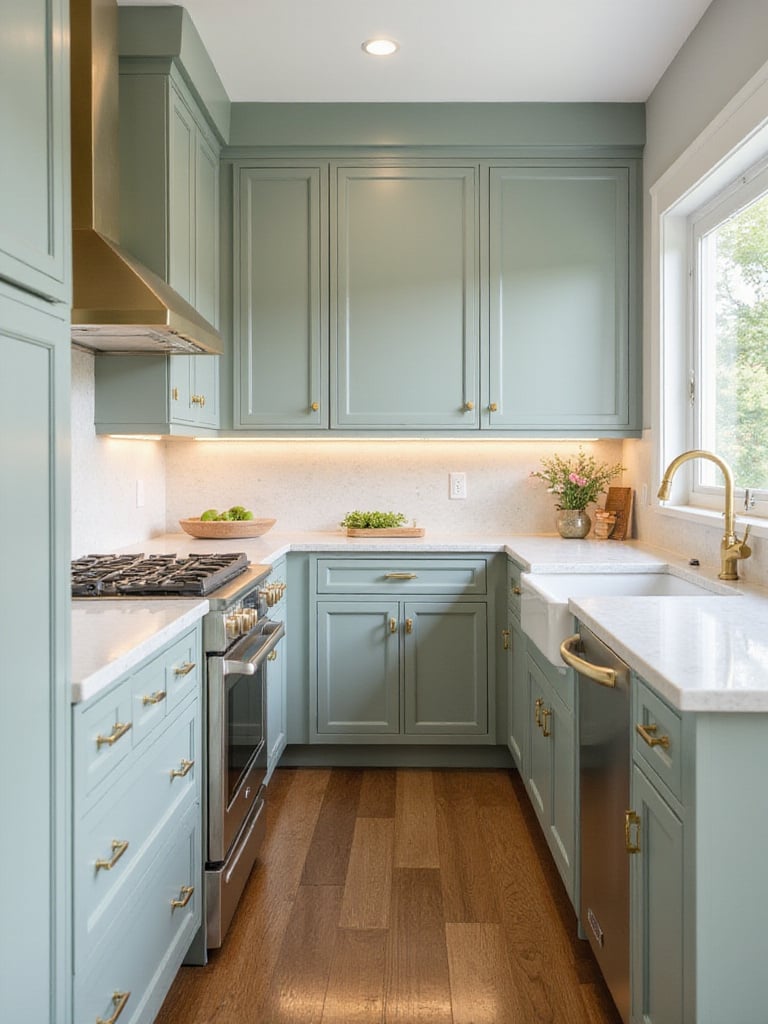
Start with a neutral foundation that provides flexibility for seasonal changes and evolving tastes, then layer in secondary colors through larger elements like islands or backsplashes. Accent colors can be introduced through smaller elements like bar stools, artwork, or decorative accessories that can be easily updated as your preferences change.
Consider the psychological impact of your color choices – warm tones like soft golds and terracottas create cozy, welcoming atmospheres perfect for family gatherings, while cool blues and grays provide calm, focused environments that support efficient meal preparation. The colors you choose should reflect both your personal preferences and the activities your kitchen supports.
The evolution of this trend reflects broader cultural shifts toward creating homes that support well-being and emotional comfort, with color playing a crucial role in establishing the mood and energy of your most-used space.
15. Design Storage That Anticipates Your Real Needs
The challenge of awkward spaces becomes easier when you design storage solutions that work with your specific belongings and daily routines rather than generic organizational systems. Successful kitchen renovation inspiration always includes a thorough inventory of what you actually use and need to store, followed by custom solutions that make everything easily accessible.
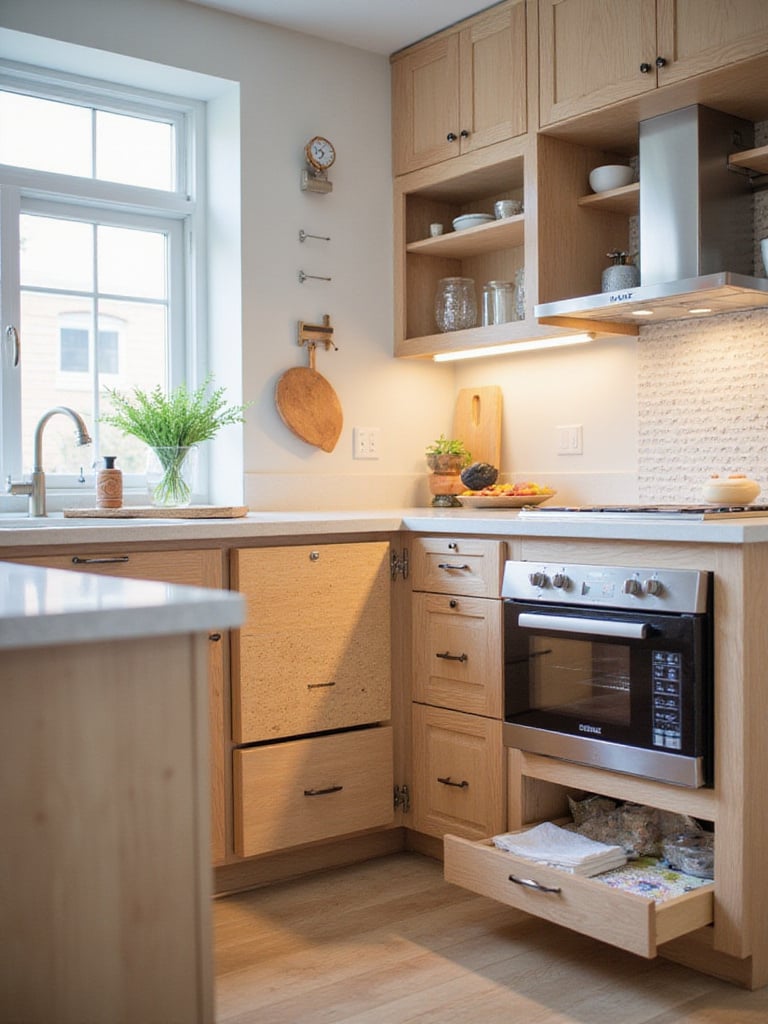
Deep drawers with dividers accommodate pots and pans more efficiently than traditional cabinets with shelves, while pull-out pantry systems bring items from the back to the front with a simple motion. Vertical dividers for baking sheets and cutting boards prevent the avalanche effect of stacked items, and dedicated spaces for small appliances keep countertops clear.
Consider the frequency of use when planning storage locations – everyday items should be in the most accessible spots between shoulder and hip height, while occasional-use items can be stored in higher or lower locations. Lazy Susans in corner cabinets maximize awkward spaces, and toe-kick drawers provide surprising storage capacity for items like table linens or cleaning supplies.
- Inventory first: Catalog what you actually need to store before designing solutions
- Frequency zones: Place most-used items in prime accessibility areas
- Custom solutions: Design storage for your specific belongings and habits
Many homeowners wonder how to maximize storage without creating a cluttered appearance – the answer lies in designing closed storage for everyday items and open display for only the most beautiful or frequently used pieces.
16. Add an Island That Earns Its Space
The composition comes together when you design an island or peninsula that serves multiple specific functions rather than just adding bulk to your kitchen. These substantial additions must justify their footprint through enhanced storage, additional work surface, seating capacity, or specialized functions like wine storage or built-in appliances.
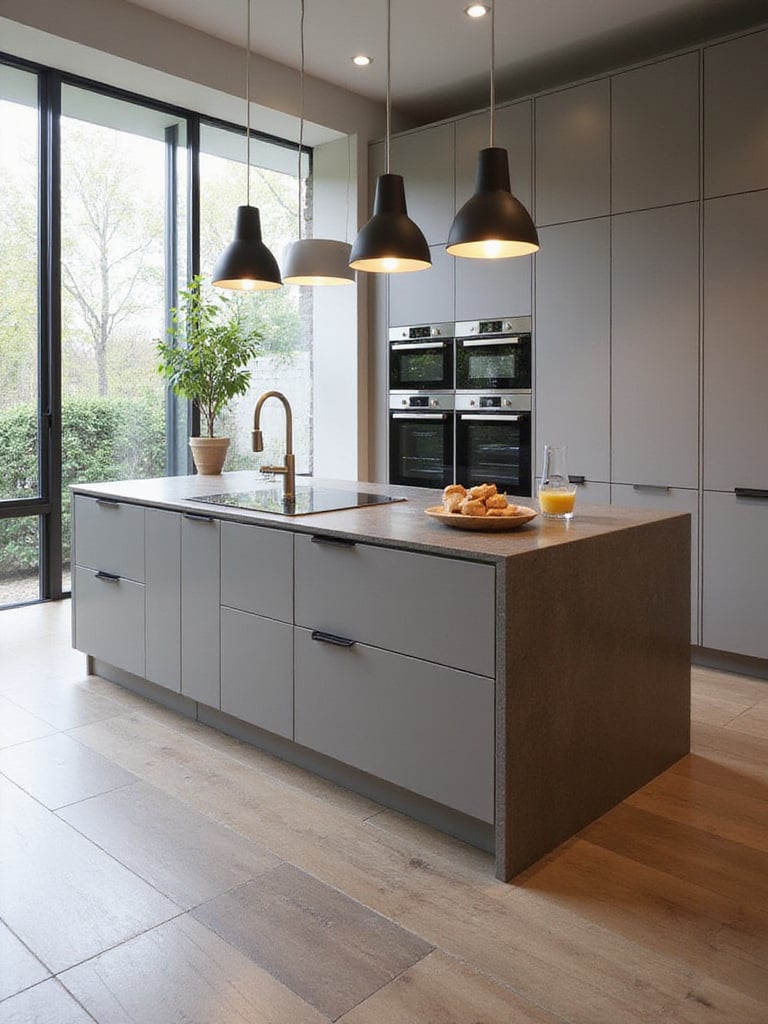
Ensure adequate clearance around all sides – 42 inches minimum for walkways, 36 inches where no appliances open, and consider traffic patterns during busy cooking times. The island’s proportions should relate harmoniously to your kitchen’s overall size; oversized islands can overwhelm smaller spaces while undersized ones look lost in large kitchens.
Multi-level islands can serve different functions simultaneously – standard counter height for food prep, bar height for casual dining, and even lower sections for specialized tasks like pastry making. Built-in storage should be planned for specific items, with deep drawers for cookware, wine storage, or even pet feeding stations.
The visual weight balances perfectly when your island’s materials and colors coordinate with the perimeter cabinetry while potentially introducing contrasting elements that add interest without creating discord.
17. Plan for Accessibility Without Compromising Style
For those hesitant about bold patterns, universal design principles offer a framework for creating kitchens that work beautifully for users of all ages and abilities. These thoughtful considerations often result in more comfortable and functional spaces for everyone, not just those with specific accessibility needs.
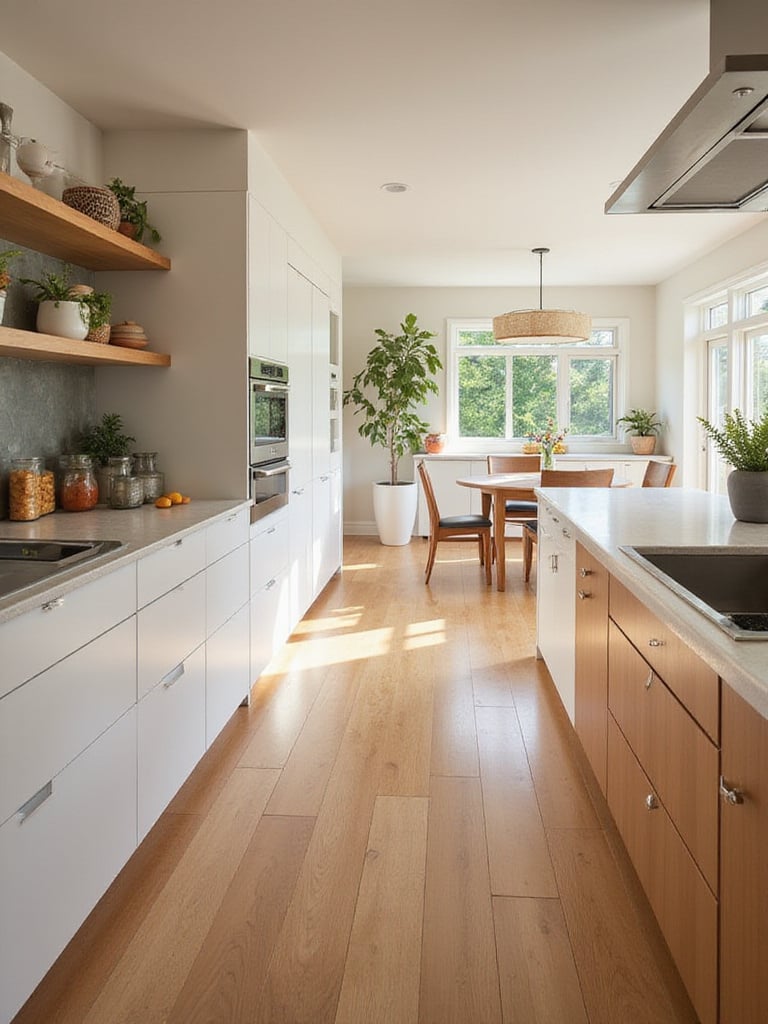
Varying counter heights can accommodate both seated and standing users, while pull-out shelves and drawers reduce the need for reaching and bending. Lever-style door handles and touchless faucets provide easier operation for those with limited hand strength or dexterity, and adequate lighting with good contrast helps everyone navigate the space safely.
Consider future needs when making current decisions – installing blocking for potential grab bars, choosing slip-resistant flooring, and ensuring adequate turning space can prevent costly modifications later. These planning decisions often improve the kitchen’s functionality for all users while maintaining aesthetic appeal.
The styling mistake most people make is assuming accessible design requires compromising on beauty – today’s universal design solutions are often indistinguishable from standard options while providing superior functionality and long-term adaptability.
18. Maximize Natural Light for Energy and Mood
Picture the warmth of evening conversations around a kitchen filled with natural light that changes throughout the day, creating different moods and energy levels. Strategic window placement and sizing can dramatically transform your kitchen’s atmosphere while reducing dependence on artificial lighting and lowering energy costs.
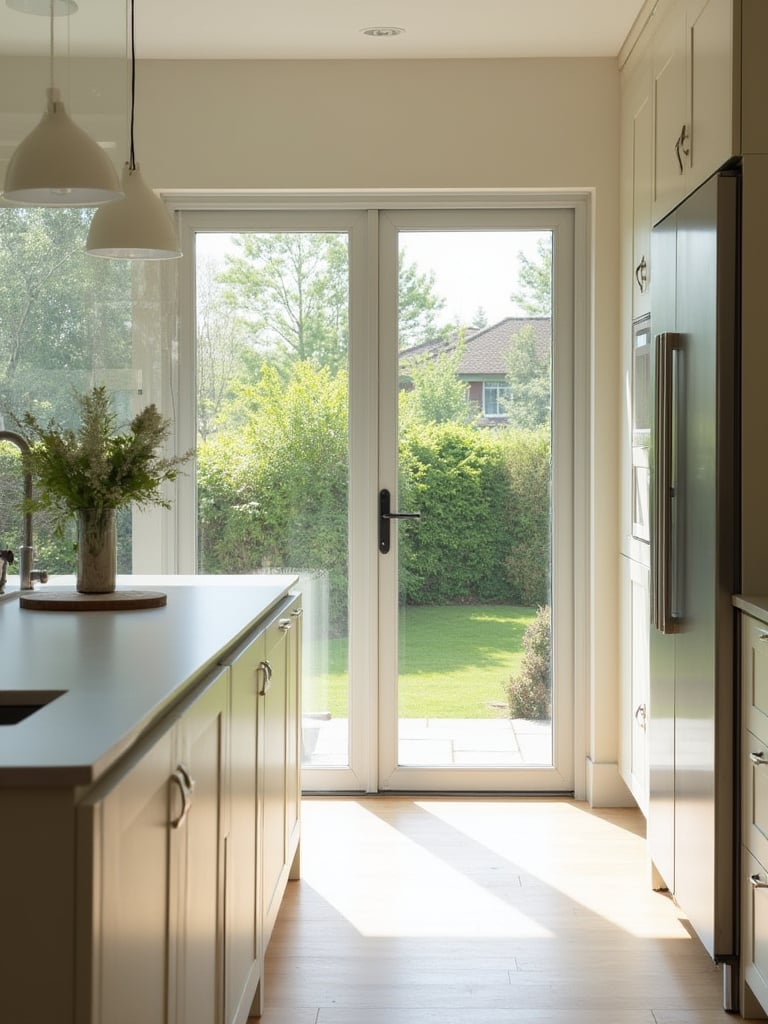
Consider the orientation of your kitchen when planning window additions or modifications – north-facing windows provide consistent, even light throughout the day, while east and west windows offer dramatic morning and evening light but may require shading to prevent glare and overheating. Skylights can bring light into interior areas that lack exterior wall access.
Reflective surfaces like glossy backsplashes, polished countertops, and strategically placed mirrors can multiply the impact of natural light, bouncing illumination deeper into the space. Light-colored cabinetry and walls enhance this effect, making smaller kitchens feel significantly larger and more open.
- Orientation planning: Consider sun paths and seasonal changes when sizing windows
- Reflective strategy: Use glossy surfaces and light colors to multiply natural light
- Glare control: Plan for window treatments or overhangs to manage harsh light
The tactile experience changes the entire room’s energy when natural light becomes a primary design element rather than an afterthought, creating spaces that feel connected to the outdoors and the rhythm of the day.
19. Personalize Your Space with Meaningful Details
The emotional response this evokes begins with understanding that your kitchen should tell your family’s story through carefully chosen personal touches and display opportunities. Open shelving, glass-front cabinets, and dedicated display areas allow you to showcase collections, artwork, and meaningful objects that make the space uniquely yours.
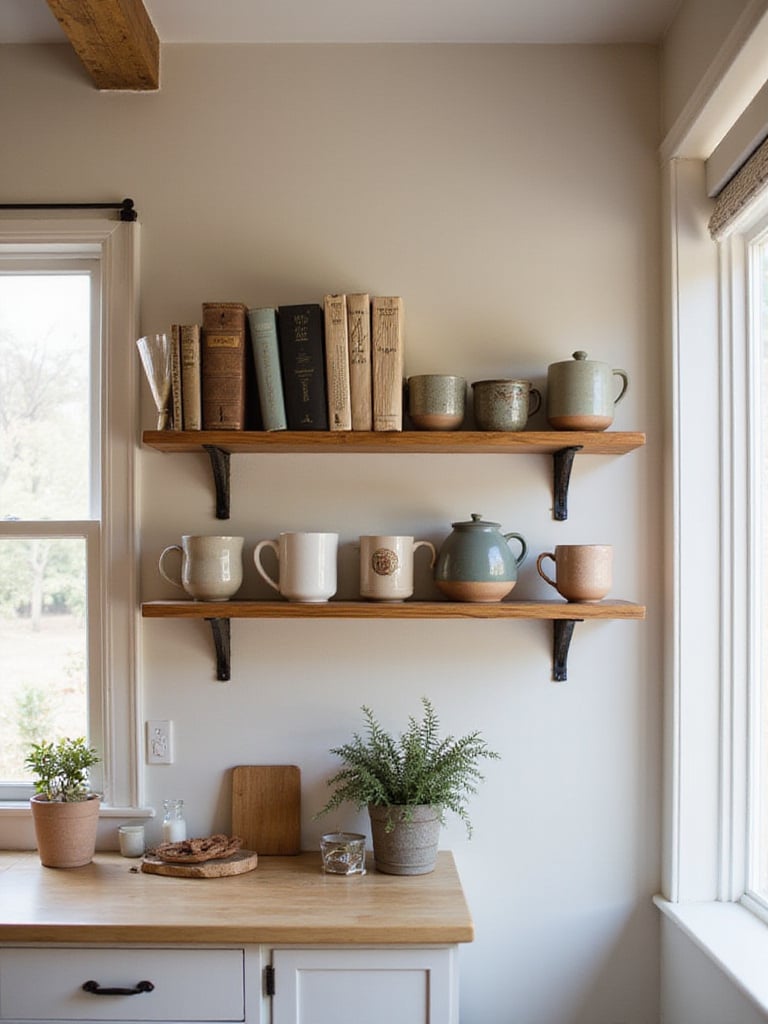
Balance is key when incorporating personal elements – too many displayed items can create visual chaos, while too few can make the space feel sterile and impersonal. Group items in odd numbers, vary heights and textures, and leave breathing room between collections to create visually pleasing arrangements that can be easily updated.
Consider rotating seasonal displays to keep your kitchen feeling fresh throughout the year – summer herbs in small pots, autumn gourds and branches, winter evergreens, and spring flowers can bring natural beauty and seasonal connection to your daily routines.
Layer in dimension by simply incorporating personal elements that reflect your interests and travels – handmade ceramics from local artisans, vintage copper pots passed down through generations, or photography that captures meaningful moments and places.
20. Hire Professionals Who Share Your Vision
When clients ask us about balancing style with comfort, the answer often lies in finding professionals who understand both the technical and aesthetic aspects of kitchen renovation inspiration. The right team brings expertise in space planning, material selection, and construction management that prevents costly mistakes and ensures your vision becomes reality.
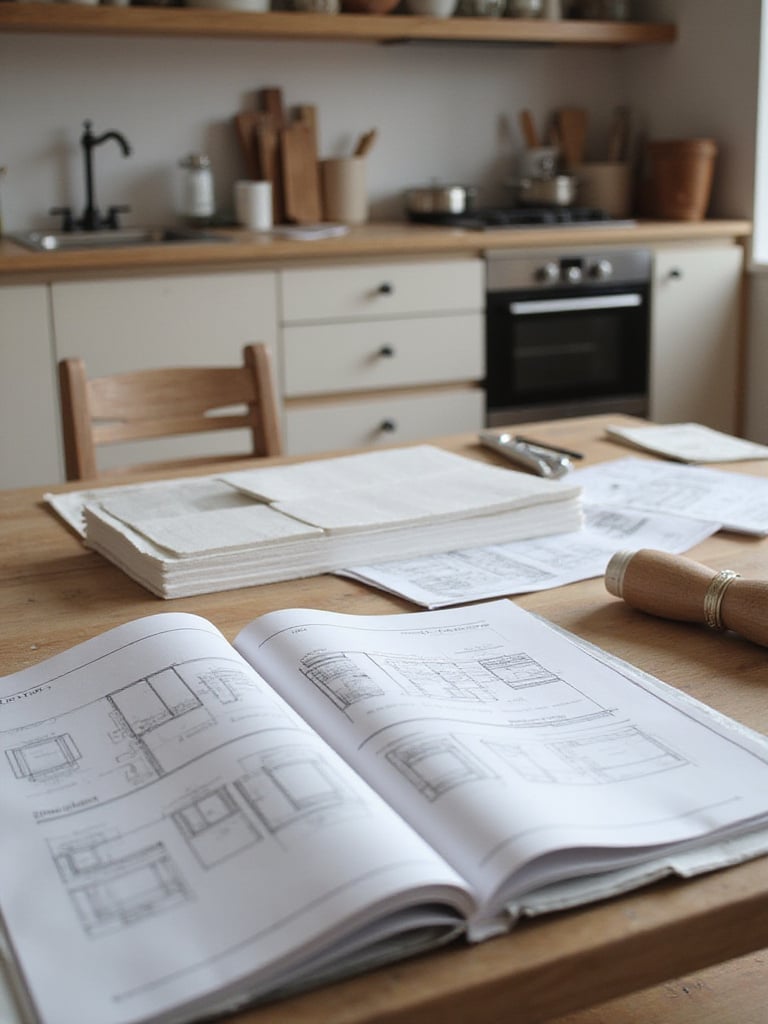
Research potential contractors and designers thoroughly – check licenses, insurance, and certifications, read reviews from recent clients, and view portfolios of completed projects similar to yours in scope and style. The investment in quality professional guidance typically pays for itself through better material sourcing, efficient project management, and superior craftsmanship.
Communication style matters as much as technical competence – choose professionals who listen carefully to your needs, explain options clearly, and respond promptly to questions and concerns. The most successful renovations involve collaborative relationships where homeowners feel heard and respected throughout the process.
- Credential verification: Check licenses, insurance, and professional certifications
- Portfolio review: Examine recent projects similar to your scope and style preferences
- Communication assessment: Evaluate responsiveness and clarity during initial consultations
The artisans behind these designs began with understanding that the best professional relationships combine technical expertise with genuine care for the homeowner’s vision and daily life.
21. Prepare for the Renovation Journey with Realistic Expectations
Even in smaller spaces, here’s how this works: successful kitchen renovation inspiration includes planning for the temporary disruption that comes with transforming your most-used room. Setting up a functional temporary kitchen in another area of your home can save hundreds of dollars in restaurant expenses while maintaining some normalcy during construction.
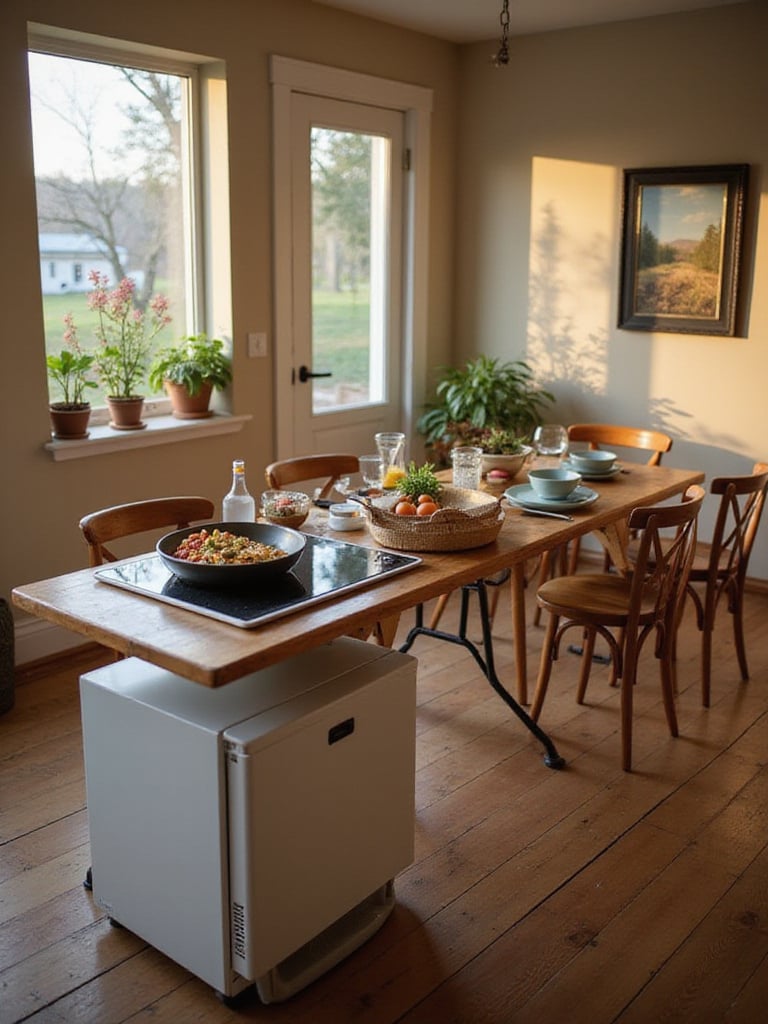
Choose a location with electrical access and ideally some water source – laundry rooms, basements, or even garages can be converted into basic cooking spaces with a few essential appliances. A microwave, mini-refrigerator, electric kettle, and portable induction cooktop can handle most basic meal preparation needs during the renovation period.
Stock up on disposable plates and utensils to minimize dishwashing, and focus on simple, one-pot meals that require minimal preparation and cleanup. This temporary adjustment period typically lasts 6-10 weeks for a complete renovation, making the investment in a functional temporary setup worthwhile for most families.
The unexpected environmental benefit comes from learning to cook more simply and efficiently, skills that often carry forward into the new kitchen and contribute to more sustainable daily habits.
22. Monitor Progress to Ensure Quality Results
The magic of this piece lies in its active involvement throughout the construction process, ensuring that your kitchen renovation inspiration translates accurately into the finished space. Regular site visits allow you to catch potential issues early, verify that work matches your approved plans, and maintain open communication with your contractor.
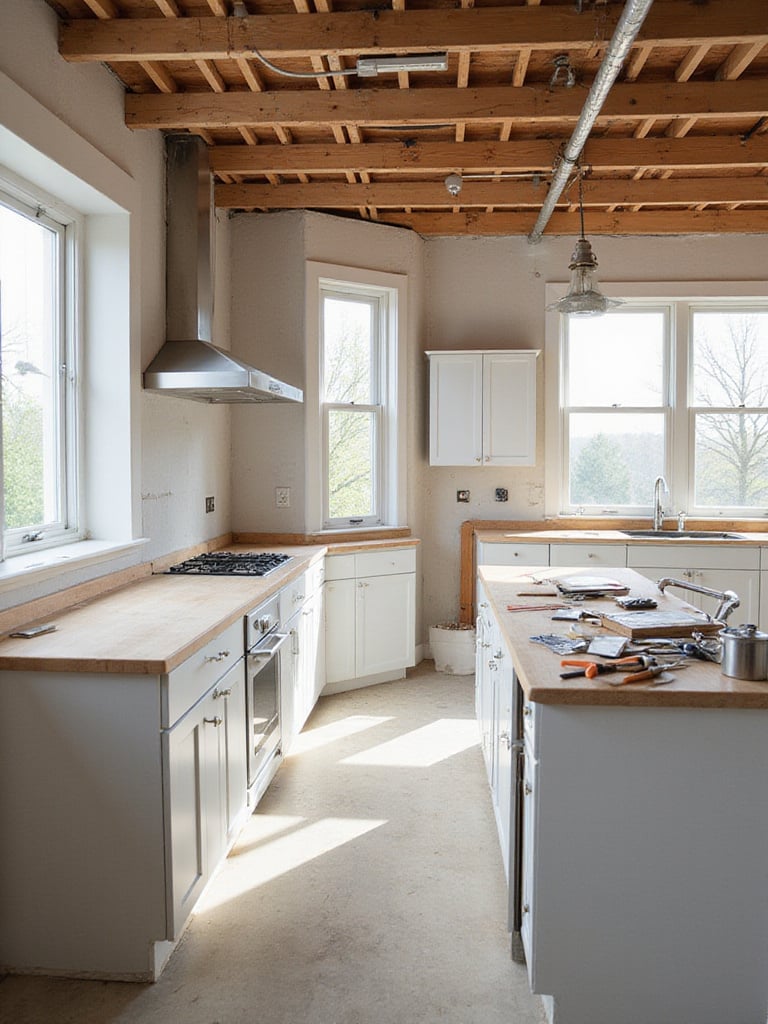
Schedule visits at key milestones – after demolition, during rough-in phases for plumbing and electrical, before drywall installation, and during major installations like cabinetry and countertops. Bring your plans and specifications to each visit for direct comparison, and document everything with photos and notes.
Address concerns promptly and constructively – most contractors appreciate engaged homeowners who ask thoughtful questions and provide feedback throughout the process. This collaborative approach often results in better outcomes and helps prevent small issues from becoming major problems.
Professional stylists approach this by first establishing clear communication protocols with their contractor, including regular update schedules and preferred methods for discussing changes or concerns as they arise.
23. Plan Your Post-Renovation Transition
The ambiance evolves throughout the day as natural light reveals the importance of planning for the transition from construction zone to functional kitchen. Professional post-construction cleaning removes the fine dust that permeates every surface during renovation, protecting your new finishes and ensuring healthy indoor air quality.
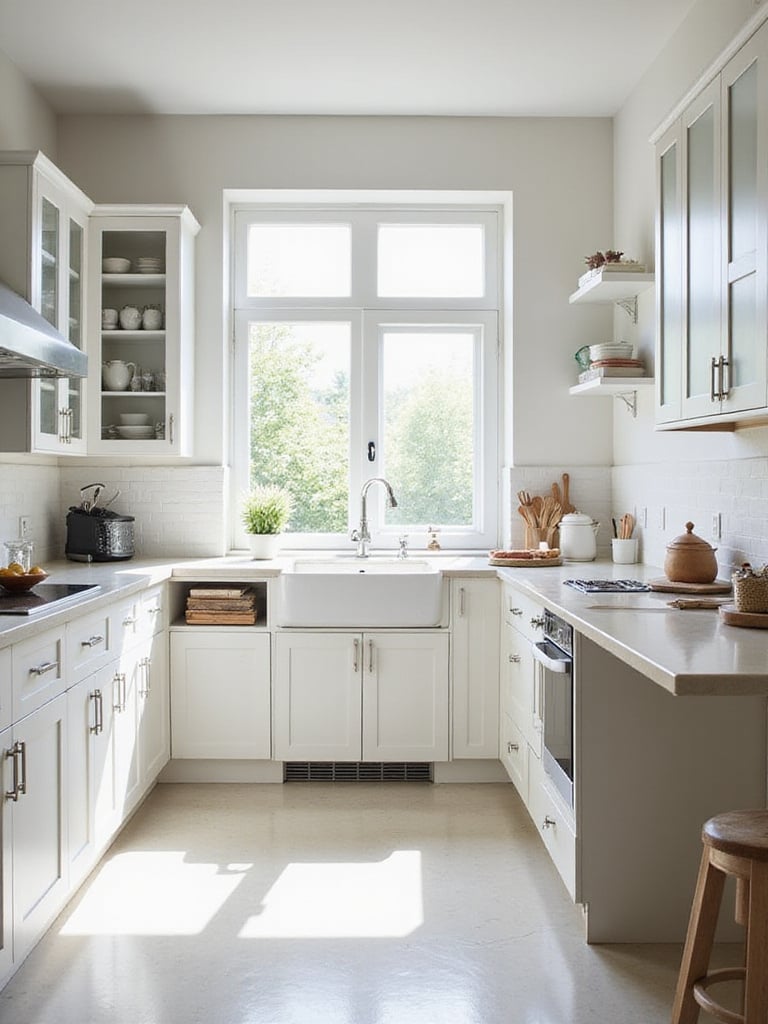
Budget 1-3% of your total renovation cost for thorough professional cleaning – this investment typically saves 40-60 hours of personal cleaning time and ensures that every surface, appliance, and storage area is ready for immediate use. The specialized equipment and products used by post-construction cleaning services achieve results that are difficult to match with household cleaning supplies.
Organize your belongings before moving back into the space, taking advantage of this fresh start to declutter and establish new organizational systems. Use this opportunity to implement the storage solutions you’ve planned, creating designated homes for every item and establishing routines that will maintain your beautiful new space.
- Professional cleaning: Budget for specialized post-construction cleaning services
- Organized unpacking: Plan storage zones before moving items back into the kitchen
- System establishment: Create new routines that maintain organization and cleanliness
The mood shifts dramatically when you add the final personal touches and begin using your transformed kitchen for its intended purpose – creating meals, gathering with family, and enjoying the fruits of your renovation investment.
24. Maintain Your Investment for Lasting Beauty
Beyond aesthetics, the ecological impact matters because consistent maintenance preserves both the beauty and functionality of your kitchen renovation inspiration for decades to come. Daily cleaning with appropriate products, regular inspection of hardware and seals, and prompt attention to minor issues prevent small problems from becoming major repairs.
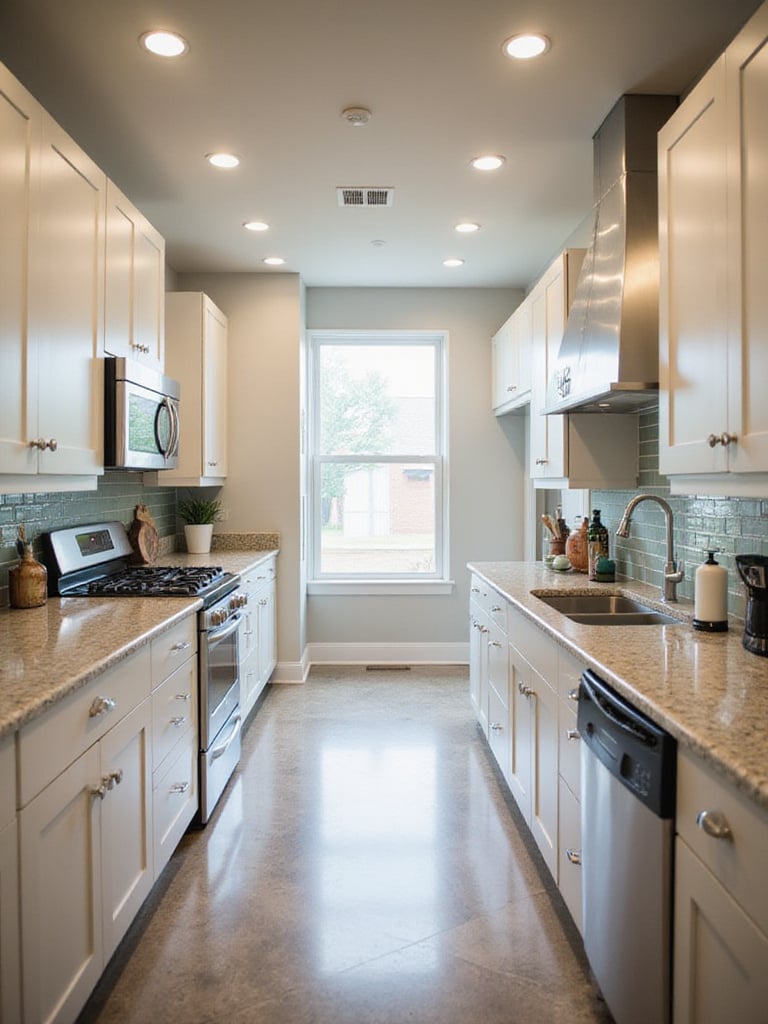
Create a maintenance schedule that includes daily wipe-downs, weekly deep cleaning, monthly hardware checks, and seasonal inspections of appliances and systems. Use manufacturer-recommended cleaning products to avoid damaging finishes, and address spills and stains immediately to prevent permanent damage.
Keep warranty information and care instructions organized and accessible – many materials and appliances include specific maintenance requirements that must be followed to maintain warranty coverage. Professional maintenance for major appliances, such as annual refrigerator coil cleaning or dishwasher filter replacement, can extend their lifespan significantly.
The heritage technique gets a contemporary update through digital maintenance logs that track cleaning schedules, service appointments, and warranty information, making it easier to stay on top of the care your investment deserves.
Conclusion
Your kitchen renovation journey represents far more than updating a room – it’s about creating the foundation for countless future memories, from quiet morning coffee moments to celebratory holiday gatherings. These 24 pieces of kitchen renovation inspiration provide the roadmap for making informed decisions that balance beauty, functionality, and long-term value.
The most successful renovations happen when homeowners approach the process with both excitement and practical planning. By defining your true needs, establishing realistic budgets, and working with qualified professionals, you’re setting the stage for a transformation that will enhance your daily life for decades to come. Remember that the best kitchen renovation inspiration comes from understanding how you actually live, then designing a space that supports and celebrates those authentic moments.
Your dream kitchen awaits – one that perfectly balances stunning aesthetics with seamless functionality, creating a space where life’s most meaningful moments naturally unfold. Take these insights, trust the process, and prepare to fall in love with the heart of your home all over again.
